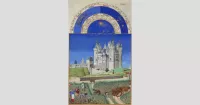Astana is the capital city of Kazakhstan, located on the Ishim River. With a population of over 1.4 million, it's the second-largest city in the country. Founded in 1830 as Akmoly, it was later known as Akmolinsk, Tselinograd, and Akmola before being renamed Astana in 1998. Briefly named Nur-Sultan in 2019, it reverted to Astana in 2022. It holds special status, administered separately from the surrounding Akmola Region.
1954: Virgin Lands Campaign
In 1954, Northern Kazakh SSR oblasts became a territory of the Virgin Lands Campaign.
1957: S. Seifullin Kazakh Agro Technical University Founded
In 1957, the S. Seifullin Kazakh Agro Technical University, the oldest university in Astana, was founded.
December 1960: Central Committee creates Tselinniy Krai
In December 1960, the Central Committee made a resolution to create the Tselinniy Krai, comprising five regions of the Northern Kazakh SSR oblasts.
March 1961: Khrushchev suggests a new name
On 14 March 1961, Khrushchev suggested the city should have a name corresponding to its role in the Virgin Lands Campaign.
April 1961: Region reconstituted as Tselinograd Oblast
On 24 April 1961, the region was reconstituted as Tselinograd Oblast.
1961: City renamed Tselinograd
In 1961, the city was renamed Tselinograd.
1963: Construction of high-rise housing districts begins
In 1963, work on the first three new high-rise housing districts began in Tselinograd.
1964: FC Astana-1964
In 1964, the FC Astana-1964 was established, based in the Kazhymukan Munaitpasov Stadium and playing in the Astana Municipal Football League.
1971: Tselinniy Krai abolished
In 1971, the Tselinniy Krai was abolished and Tselinograd became the oblast's new capital.
1983: Trolleybus Routes Opened
In 1983, trolleybus routes were opened in Astana, initially consisting of 3 routes.
1989: Population data for Tselinograd
In 1989, Tselinograd had a population of 281,000, with 17.7% Kazakh, 54.1% Russian and 28.2% other ethnic groups.
1991: Name changed to Akmola
In 1991, following Kazakhstan's independence, the name was changed to Akmola.
July 1994: Decree on the transfer of the capital adopted
On 6 July 1994, the Supreme Council of Kazakhstan adopted the decree "On the transfer of the capital of Kazakhstan".
1994: Kazakh Humanities and Law Institute Founded
In 1994, the Kazakh Humanities and Law Institute, a law university, was founded by the Ministry of Justice initiative.
May 1996: L.N. Gumilyov Eurasian National University Founded
On May 23, 1996, the L.N. Gumilyov Eurasian National University was founded by merging the Akmola Civil Engineering Institute with the Akmola Pedagogical Institute.
December 1997: City becomes the capital of Kazakhstan
In December 1997, Astana replaced Almaty as the capital of Kazakhstan.
December 1997: Capital moved from Almaty to Akmola
On 10 December 1997, the capital of Kazakhstan was moved from Almaty to Akmola.
1997: Attains capital city status
Astana attained capital city status in 1997.
1997: Almaty replaced as capital
In 1997, Almaty was replaced by Astana as the capital city of Kazakhstan.
April 1998: Design competition for new capital
In April 1998, the Government of Kazakhstan asked architects and urban planners of international renown to participate in a design competition for the new capital.
May 1998: City renamed Astana
In May 1998, the city was renamed Astana.
May 1998: Almaty and Saryarka Districts created
On 6 May 1998, Almaty District and Saryarka District were created by presidential decree.
June 1998: Astana presented as the capital internationally
On 10 June 1998, Astana was presented as the capital internationally.
October 1998: Kisho Kurokawa awarded First Prize
On 6 October 1998, Japanese architect Kisho Kurokawa was awarded the First Prize for the design competition of the new capital.
1998: City renamed Astana
In 1998, the city was renamed Astana, meaning "capital city" in Kazakh.
July 1999: Astana awarded title of City of Peace
On 16 July 1999, Astana was awarded the medal and title of the City of Peace by UNESCO.
1999: Miras International School Established
In 1999, the Miras International School was established as the first private high school in Astana.
2001: Astana – New City special economic zone established
In 2001, the Astana – New City special economic zone was established to help develop industry and increase the attractiveness of the city to investors.
2002: Astana population reaches 493,000
In 2002, the population of Astana was 493,000.
2003: Astana hosts the Congress on World and Traditional Religions
Since 2003, Astana has hosted the Congress on World and Traditional Religions, which is a diverse gathering of religious leaders to discuss religious harmony and ending terrorism and extremism.
2006: Only one trolleybus route left
By 2006, only one trolleybus route was left in operation in Astana.
2006: Palace of Peace and Reconciliation constructed
In 2006, the Palace of Peace and Reconciliation was specially constructed to host the Congress of Leaders of World and Traditional Religions.
2007: Astana's population more than doubles
By 2007, Astana's population had more than doubled since becoming the capital, to over 600,000.
2007: Astana Pro Team Founded
In 2007, the Astana Pro Team was founded to participate in the UCI World Tour.
August 2008: Yesil District created
On 5 August 2008, Yesil District was created by presidential decree.
2008: Barys Astana founding member of KHL
In 2008, Barys Astana became a founding member of the Kontinental Hockey League and based in the Barys Arena.
2008: Trolleybus System Closed
In 2008, the trolleybus fleet was declared unprofitable and completely closed due to debts.
2008: Esil River Navigation Organized
Since 2008, navigation on the Esil River has been organized within the city of Astana.
2009: FC Astana Founded
In 2009, FC Astana, a major association football team, was founded and became part of the Kazakhstan Premier League.
July 2010: Astana's Bid to Host Expo 2017 Presented
On July 1, 2010, representatives from Astana presented the city's bid to host the Specialised Expo 2017.
2010: Nazarbayev University Founded
In 2010, Nazarbayev University, an autonomous research university, was founded in partnership with top world universities.
2011: Hosts the 2011 Asian Winter Games
In 2011, Astana gained international recognition when it hosted the Asian Winter Games.
2011: Library and Museum Usage
In 2011, Astana's 27 libraries served 153 people per thousand residents, and its 8 state museums were visited by 415,500 people.
2011: "New Transport System of Astana" Established
In 2011, the Akimat of Astana established the "New transport system of Astana" to implement changes and programmes in the metropolis.
2011: Haileybury Astana School Established
In 2011, the Haileybury Astana school, a branch of the Haileybury and Imperial Service College, was established.
2011: UCI Track Cycling World Cup Stage
In 2011, the Saryarka Velodrome in Astana hosted the UCI Track Cycling World Cup stage.
2012: FC Bayterek Founded
In 2012, FC Bayterek was founded to develop youth football and became a member of the Kazakhstan First Division.
2012: Astana Presidential Sports Club Founded
In 2012, the Astana Presidential Sports Club was founded to combine the main sports teams in Astana.
November 2013: President Condemns LRT Construction
In November 2013, President Nursultan Nazarbayev condemned the construction of the LRT due to the high cost.
December 2013: Planned Completion of First Stage of LRT
It was planned that the first stage of construction of a 16.4-kilometer LRT line, which would've included nine stations, was planned to be completed by December 1, 2013.
2013: Student Enrollment Increase
In 2013, the city had a total of 53,561 students enrolled in its 14 higher education institutions.
2014: Opening of School of Medicine at Nazarbayev University
In 2014, the School of Medicine at Nazarbayev University opened, marking the second medical school in Astana.
2014: AstanaBike Program Operating
Since 2014, the bicycle-sharing program AstanaBike has been operating in Astana.
April 2015: Increase in people employed in small and medium-sized businesses
As of 1 April 2015, the number of people employed in small and medium-sized business increased by 17.8% to over 234,000 people.
July 2015: Increase in small and medium-sized businesses
As of 1 July 2015, the number of small and medium-sized businesses increased by 13.7% to over 96,000 compared to the previous year.
2015: World Sprint Speed Skating Championships
In 2015, the Alau Ice Palace hosted the World Sprint Speed Skating Championships.
2015: SEZ commissions five projects in Industrial Park No. 1
In 2015, the SEZ plans to commission five projects worth 20 billion KZT in the Industrial Park No. 1, including various manufacturing plants.
October 2016: Astana included in top 21 intelligent communities
In October 2016, Astana was included in the list of top 21 intelligent communities of the world by the Intelligent Community Forum.
June 2017: Expo 2017 Opened
On June 10, 2017, Expo 2017 opened with heads of state from 17 nations in attendance.
2017: Hosts Expo 2017
In 2017, Astana hosted Expo 2017, a major international exhibition focused on "Future Energy".
2017: Astana population tops 1 million
In 2017, Astana's population topped 1 million.
2017: Nurly Zhol Railway Station Built
In 2017, a new railway station, Nurly Zhol, was built during the Expo 2017 event, with a customer capacity of 12,000.
2017: New Terminal Construction
In 2017, construction of a new terminal at Nursultan Nazarbayev International Airport was spurred by an expected 50% increase in passenger traffic.
2017: AstanaBike System Expansion
In 2017, the AstanaBike system consisted of 40 stations with 1000 bicycles.
2017: Kazakh concept for Astana Expo 2017
In 2017, the Kazakh concept for the Astana Expo was "Future Energy".
2017: Construction of LRT Began
In 2017, the construction of the LRT began, including the construction of flyovers.
March 2018: Baykonyr District created
On 16 March 2018, Baykonyr District was created by presidential decree.
July 2018: Astana International Financial Center opens
In July 2018, the Astana International Financial Center (AIFC) opened to become a hub for financial services in Central Asia.
2018: Record foreign direct investment
In 2018, Astana attracted more than three trillion tenge (US$7.91 billion) in foreign direct investment, a record amount for the city.
March 2019: City renamed Nur-Sultan
In March 2019, the Kazakhstani government renamed the city Nur-Sultan to honour President Nursultan Nazarbayev.
July 2019: Martial Art Palace Opened
On July 6, 2019, the martial art palace opened, offering sports facilities for international competitions in various Olympic and non-Olympic disciplines.
2019: Corruption Scandal and Project Stagnation
In 2019, after a corruption scandal, the LRT project stagnated.
2019: City renamed Nur-Sultan
In 2019, the city was briefly renamed Nur-Sultan in honor of former president Nursultan Nazarbayev.
May 2020: Construction of LRT Not Started
As of May 2020, the construction of the light rail (LRT) had not yet started.
May 2020: WTO members discuss rescheduling the conference
In May 2020, WTO members discussed Kazakhstan's offer to reschedule the conference to June 2021 but postponed taking a decision.
June 2020: WTO Ministerial Conference postponed
The 12th Ministerial Conference of the World Trade Organization (WTO), originally scheduled to take place in June 2020 in Nur-Sultan, Kazakhstan, was postponed due to the COVID-19 pandemic.
April 2021: WTO members agree conference will take place in Geneva
In April 2021, members agreed that MC12 would take place in Geneva from 30 November to 3 December.
June 2021: WTO conference rescheduling discussed
In May 2020, WTO members discussed Kazakhstan's offer to reschedule the conference to June 2021 but postponed taking a decision due to the ongoing pandemic.
2021: Recognized as a priority tourist destination
In 2021, Astana was recognized as one of Kazakhstan's 10 priority tourist destinations.
September 2022: City reverts to Astana
In September 2022, President Kassym-Jomart Tokayev signed a constitutional amendment to revert the name of the capital back to Astana.
September 2022: Name changed back to Astana
In September 2022, the name of the capital was changed back to Astana.
2022: Astana leads in Global Financial Centers Index
Astana is the leader in the CIS region on Global Financial Centers Index rank in 2022.
2022: City reverts to Astana
In 2022, the city reverted to the name Astana.
2023: Passenger Traffic at the Airport
In 2023, Nursultan Nazarbayev International Airport saw 7,500,000 passengers pass through it.
2023: Construction of LRT Resumed
In 2023, construction of the LRT resumed after a period of stagnation.
January 2025: Astana population reaches 1,528,703
As of January 2025, the population of Astana is 1,528,703.
2025: Ethnic Kazakhs make up 82.3% of city population
As of 2025, ethnic Kazakhs made up 82.3% of the city population, representing a significant increase since independence.
2025: Ethnic groups
Ethnic groups as of 2025.
2030: Completion of diplomatic quarter and government buildings
By 2030, the diplomatic quarter and government buildings are to be completed in Astana.
Mentioned in this timeline

Football is a family of team sports primarily involving kicking...
Kazakhstan a landlocked country in Central Asia with a small...

Justice in its broadest sense is the concept of treating...

September is the ninth month of the year in the...

A community is a social unit defined by shared characteristics...
Ice is water in a solid state forming at or...
Trending
8 months ago Maldives bans Israelis in solidarity with Palestinians amid Gaza conflict escalation.

3 months ago Brock Bowers' Injury Concerns: Raiders' Crosby Also Added to Injury Report

2 months ago Edison Upgrades South Pasadena Electrical Grid Amidst Storm Recovery, Lifting Evacuation Orders

John Stamos is an American actor and musician who rose to fame as Blackie Parrish on General Hospital earning a...

8 months ago Austin Hays emerges as a top Fantasy Baseball Waiver Wire pickup.

1 month ago Maxxine Dupri, assisted by AJ Lee, dethrones Becky Lynch for Intercontinental Title on Raw!
Popular

Tucker Carlson is an American conservative political commentator known for...

XXXTentacion born Jahseh Dwayne Ricardo Onfroy was a controversial yet...

Ben Shapiro is a prominent American conservative political commentator media...

Candace Owens is an American conservative political commentator and author...

William Franklin Graham III commonly known as Franklin Graham is...

Ursula Gertrud von der Leyen is a prominent German politician...